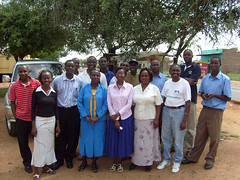Watermelons seeds can be planted directly in the field or indirectly through the nursery. In the tropics direct planting should be done between 20th April to15th May while nursery planting should be done between 1st May to 20th June. The seeds should first be grown in nurseries or containers and then transplanted through plastic mulch when the daily temperatures are 60degrees F.
Before field planting is done, one should lay clear plastic mulch since this would help in conserving moisture but also increases total early yield. The mulch could be black plastic or paper. Fumigation of the soil is also necessary to control weeds and soil borne diseases. Prepare the planting bed 30 days before actual field planting.
When applying fertilizer, at least 50% of nitrogen should be in nitrate form and should be applied during field preparation.
SpacingThe recommended spacing for watermelons is 6 to 8 feet between rows and 3 to 4 feet between plants in a row. For seedless varieties, you need a pollinator variety placed in every third row to ensure there is good fruit set.


 Domestic players such as Nakumatt are beginning to open stores in smaller towns outside the capital city Nairobi, whilst pan-African player Shoprite has been rumored to be considering market entry through the acquisition of struggling local player Uchumi. While the farmers deliver direct to Uchumi, the supply of indigenous vegetables to Nakumatt is done through traders who supply to its subsidiary company
Domestic players such as Nakumatt are beginning to open stores in smaller towns outside the capital city Nairobi, whilst pan-African player Shoprite has been rumored to be considering market entry through the acquisition of struggling local player Uchumi. While the farmers deliver direct to Uchumi, the supply of indigenous vegetables to Nakumatt is done through traders who supply to its subsidiary company